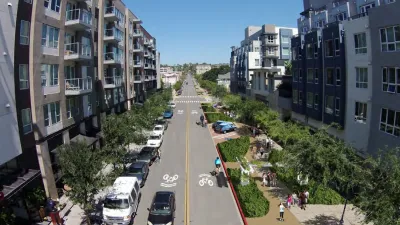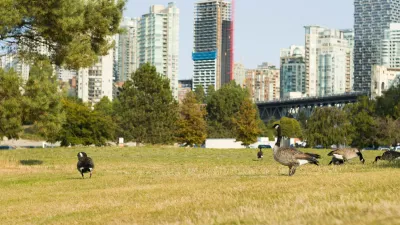How parklets, open streets, and green spaces make cities safer and friendlier for children and families.

In a piece published in Streetsblog USA, Emily Stutts highlights three of the best lessons she drew from a learning tour of Munich and Rotterdam, European cities that have made a conscious effort to make streets safe, comfortable, and welcoming for children and families and in doing so, have made the public realm better for everyone.
For example, spaces like parklets can spur permanent change. “While a parklet might start as a one-day project — perhaps for international Park(ing) Day — these placemaking powerhouses can easily become a permanent or semi-permanent fixture of your school community.”
Open streets, like parklets, offer places where children and families can meet and play safely. For Stutts, “Play is a universal language for connection and happiness, if only we create the space to do so.”
Stutts points out that in the Netherlands, cities have a friendly competition to see who can create the most green spaces on their urban streets. “This same solution could be implemented in school parking lots, driveways, or along side-streets near schools in the U.S., too.”
Stutts believes that “by experimenting with our streets and parking lots, we are allowing ourselves and our students to dream and imagine the kind of world they want to live in.” Starting with schools can spark ideas for broader change across neighborhoods and cities. “The infrastructure supports kids’ independence, safety, playfulness, and joy — while also supporting citizens of all other age groups, too!”
FULL STORY: Three Ways To Reimagine Streets for Kids

Maui's Vacation Rental Debate Turns Ugly
Verbal attacks, misinformation campaigns and fistfights plague a high-stakes debate to convert thousands of vacation rentals into long-term housing.

Planetizen Federal Action Tracker
A weekly monitor of how Trump’s orders and actions are impacting planners and planning in America.

In Urban Planning, AI Prompting Could be the New Design Thinking
Creativity has long been key to great urban design. What if we see AI as our new creative partner?

King County Supportive Housing Program Offers Hope for Unhoused Residents
The county is taking a ‘Housing First’ approach that prioritizes getting people into housing, then offering wraparound supportive services.

Researchers Use AI to Get Clearer Picture of US Housing
Analysts are using artificial intelligence to supercharge their research by allowing them to comb through data faster. Though these AI tools can be error prone, they save time and housing researchers are optimistic about the future.

Making Shared Micromobility More Inclusive
Cities and shared mobility system operators can do more to include people with disabilities in planning and operations, per a new report.
Urban Design for Planners 1: Software Tools
This six-course series explores essential urban design concepts using open source software and equips planners with the tools they need to participate fully in the urban design process.
Planning for Universal Design
Learn the tools for implementing Universal Design in planning regulations.
planning NEXT
Appalachian Highlands Housing Partners
Mpact (founded as Rail~Volution)
City of Camden Redevelopment Agency
City of Astoria
City of Portland
City of Laramie





























